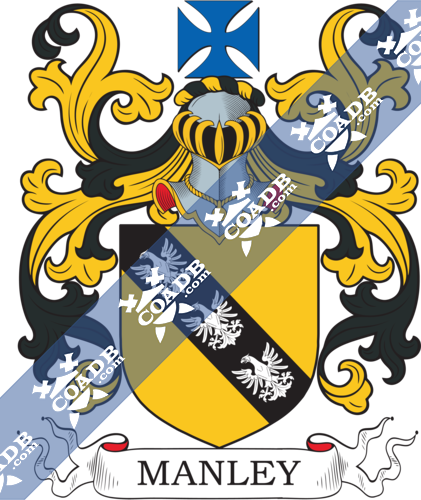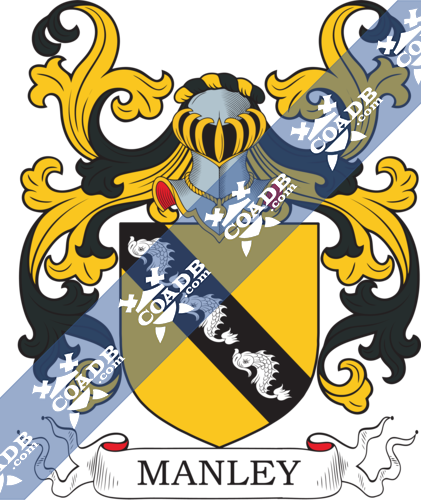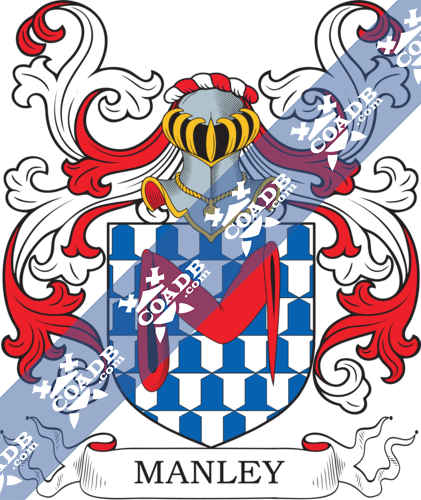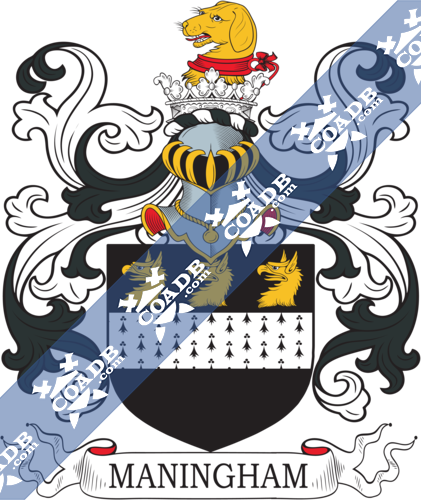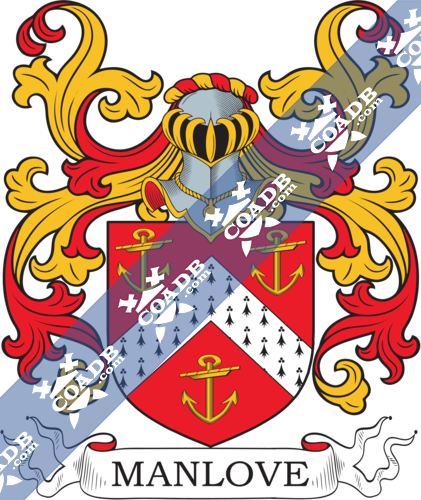Manley Family Crest, Coat of Arms and Name History
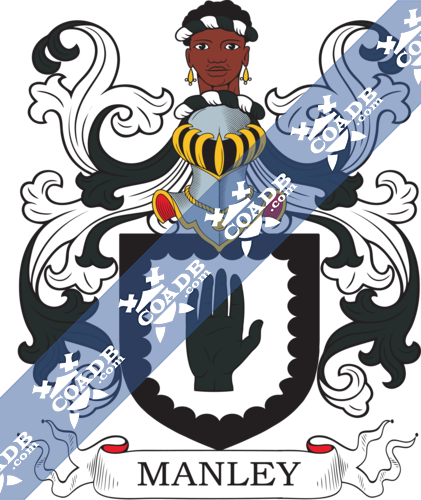
Manley Coat of Arms Gallery
Don’t know which Coat of Arms is yours?
We can do a genealogical research. Find out the exact history of your family!
Learn MoreManley
Manley is an English place name giving a location for where someone was from. The earliest definition means a common area much like the name ‘green’ might mean to a settler in New England. The old English spelling Mainleah, which is found in ancient 7th century Anglo-Saxon texts, translates as a clearing in a wooded area. During the middle ages, a surname helped to distinguish a person by either their type of work or by the place where they were born. This locator name became associated over time with powerful lords or the primary landowner of a region. People born on the lords property were not as a rule allowed to migrate to other locations, as a result they would oftentimes take the place where they lived, and use it as their surname. (Not until the middle of the 14th century were non nobles allowed to travel. The Bubonic Plague in England, destroyed the manorial way of life. And with its destruction serfs began traveling to other districts, and the early onset of a burgeoning middle class began.) The Manley surname is found predominately in the Cheshire and Devonshire regions of England.
The variations of the name can be spelled, Many, Mainleah, Manligh, Manelegh, and Manley. The first recorded instance of someone using the surname of Manley or Manligh was in the early 12th century during the time of King John Plantagenet, also known as Prince John ‘Lackland’ the younger brother to Richard the Lionhearted.
In the 12th century there is a record of a Roger de Manley living in Cheshire, next to the Welsh border. Manley Manor was a small, but prosperous holding having been granted to the Manley family by the Earl of Cheshire. The English and Welsh border region known in old English as a ‘March’ was an unsettled region of violence and rebellion. the Earl of Cheshire was one such ‘Marcher Lord’ who recruited heavily among peasants and free men to settle his border lands. It wasn’t until Edward I conquered Wales in a six-year campaign lasting from 1277 to 1283 did the region stabilize.
It is important to note, Manley is also associated with Counties Connaught, Cork and Mayo in Ireland. After the English language became dominant in Ireland, names were spelled phonetically by their Norman lords. O’Maonghaile means son of Maonghal, which when spoken sounds like Manley. It is a very distinct linguistic drift which happened with some regularity during the seven hundred year administration of Ireland by the English. There are sounds which exist only in the Irish language and the same can be said of English. The English for instance have a ‘J’ sound as in the name of ‘James.’ The Irish do not. Hence the name of Seamus, which means James in Irish.
The Manley family of England might have started humbly in the time of the Norman conquest, but they did not remain so. They have remained solidly in what historians referred to as Yeoman stock. They were prosperous, they held land, and under the old English rules for having arms granted to them, they had an annual income of five hundred pounds.-Which qualified them as a member of English society where they could bear arms.
Locations named Manley:
There are two places in England named Manley. Manley, and Manley Common, both of whom are in Cheshire.
There are four states in the USA who have a place named Manley. Nebraska, Minnesota, Illinois and Delaware.
Notable personages named Manley:
William Manley is considered to be the first Manly to have arrived in North America, specifically Massachusetts in 1690 with Royal Governor Winthrop. Historical records are vague about his life in the Massachusetts Colony. It doesn’t appear he had a family, yet a Manley family existed after his death. William Manley spent the majority of his life living in Charlestown, Massachusetts. He died in 1733.
Captain John Manley. Considered by the US Navy to be one of the founding fathers of the service itself. He personally received his commission from Gen. George Washington. He personally captured five vessels under British command with just his crew. He orchestrated the capture of ten more vessels using the small flotilla he assembled from militarized merchant vessels and captured British ships. The most important vessel seized during the war was the HMS Polly. Which was full of gunpowder, ammunition and military stores. Its capture at the start of the war ensured the nascent continental army could continue to have arms and equipment when native supplies had run out. Capt John Manley also captured the very last British vessel to be seized in the American Revolution. The US Navy considers him to be one of the top commanders, they had at the time. In his honor three ships have carried his name.
Blazons & Genealogy Notes
1) (Manley, co. Chester, and Erbistock, co. Denbigh; derived from one of the companions in arms of the Conqueror, whose name appears on the Battell Abbey Roll). Motto—Manus hæc inimica tyrannis. Ar. a dexter hand couped and erect sa. a bordure engr. of the last. Crest—A Saracen’s head affrontée ppr. wreathed about the temples ar. and sa.
2) Or, on a bend. sa. three eagles displ. ar. Crest—A cross pattée az.
3) Or, on a bend sa. three dolphins ar.
4) Or, on a bend sa. three dolphins ar.
5) Purp. a sinister hand couped and erect ar.
6) Vair a maunch gu.

